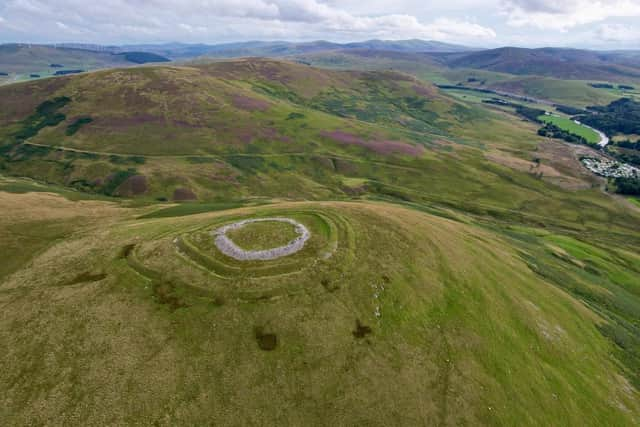Last look at Celts at home in Clydesdale
and live on Freeview channel 276
In the main they lived in groups of ten or more dwellings in strongly fortified hillforts protected by a perimeter wall.
The best-preserved example of these is Arbory Hill near Abington; a friend of mine took an aerial shot of this magnificent hillfort using a drone. This fort was occupied throughout the Iron Age and beyond.
Advertisement
Hide AdAdvertisement
Hide AdIt would have been a very tough nut to crack as it was protected by two ditches and a stone wall. The stone wall is a special feature of the late Iron Age and is called a Murus Gallicus or Gallic Wall. This type of fortification is first mentioned in the pages of Julius Caesar’s De Bello Gallico, Caesar’s account of his Gallic campaigns.


The construction method saw stones and earth placed in between a timber framework as our Celtic ancestors had no other way of cementing the stones together.
Occasionally the timber was set on fire by attackers and the heat was such that the stones became so hot they fused together, a process known as vitrification.
Within the fort the clan grouping would have lived in round houses. A good example of how our Iron Age ancestors lived is to be found at Dreva not far from Broughton. Here foundations of both huts and places to accommodate animals have been found plus upright stones set in the ground to prevent a sudden attack by cavalry.
Advertisement
Hide AdAdvertisement
Hide AdVirtually every prominent hilltop had a fort. In Clydesdale, Cairngryffe was perhaps the largest but the majority of it is now quarried away.
Another interesting type of settlement is the Crannog, which is usually a lake dwelling but Clydesdale has its own unique Crannog.
Hyndford Crannog was located in a marshy area near Langloch Farm where CCI is now based. It was a single hut on a raised platform in a marsh. The only remnants of the marsh is the Lang Loch which survived up to the early 1900s.
Hyndford Crannog was excavated in the 1890s and the finds put in the Lindsay Institute, including Celtic jewellery and Roman pottery.